Simchat Torah: Scripture as a Living Entity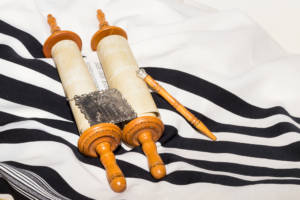
Every fall, Jewish congregations across the world hold joyful celebrations for one of their religion’s most important books, the Simchat Torah.
Scripture and sacred writings are revered in several religions. Expressions of such reverence can take many forms, including rules on the handling, storage, and reading of sacred texts. Every fall, Jewish congregations across the world hold joyful celebrations for one of their religion’s most important books. Simchat Torah conveys the centrality of the Torah to Jewish culture and faith.
When Is Simchat Torah?
Simchat Torah is a Hebrew phrase that means “rejoicing in Torah,” and it accurately conveys the holiday’s central themes. It’s celebrated on the 22nd or 23rd of Tishrei, the seventh month of the Jewish calendar that usually falls between September and October. This holiday takes place two days after the end of Sukkot, the Feast of Tabernacles that commemorates the ancient Israelites’ wanderings in the Sinai Desert. In Canada, Simchat Torah starts on the evening of October 10 in 2020 and at sunset on September 28 in 2021.
In some parts of the world, Simchat Torah immediately follows another important holiday known as Shemini Atzeret. Translated as “eighth day of assembly,” My Jewish Learning explains that Shemini Atzeret was devoted to the ritual cleansing of the Temple’s altar during the Second Temple Period between 516 B.C.E. and 70 C.E. In Israel and some Jewish communities abroad, Shemini Atzeret and Simchat Torah are combined into one holiday.
Why Is This Holiday Important?
Simchat Torah concludes one annual cycle of Torah readings and signals the start of the next. On this day, the last portion of Deuteronomy and the first passage of Genesis are both read in synagogues. This choice of readings is significant: Deuteronomy’s final passage describes the death of Moses, and the first reading of Genesis contains the creation story. Since both readings take place on the same day, the Torah reading cycle remains unbroken from year to year.
With many Jewish holidays like Hanukkah and Passover, celebrations are centered in the home. Simchat Torah is different because its celebrations primarily take place in synagogues. Chabad describes the hakafot, a procession during which congregants march and dance with the Torah scrolls around the synagogue’s reading table. The hakafot takes place on both the Maariv evening service that starts the holiday and at another service the following day. Many congregations invite all ages and genders to participate, with some carrying their synagogues’ physical Torah scrolls and children carrying flags and smaller Torah scrolls.
The Torah as Teacher and Honored Guest
Rabbi Ronald H. Isaacs of My Jewish Learning mentions that carrying a Torah scroll is considered a great honor. You’re probably not surprised to learn this, but the Torah’s importance goes beyond mere reverence for a holy book. Moment’s Marilyn Cooper mentions that it comes from a verb that means “to shoot,” “to hit a mark,” or “to direct.” Chabad also discusses the concept of The Oral Torah, describing it as insight and wisdom that is essentially “a living, growing organism that cannot be captured by the net of dry ink on a page.”
Not only that, Torah scrolls are treated like royalty. The Sefer Torah are dressed in elaborate cloth mantles or ornate silver cases and adorned with silver crowns. When a Sefer Torah is worn out, it is given a respectful burial.
The Torah Is Alive and Well
The Jerusalem Post’s Stewart Weiss recounts what the rabbi of his congregation once told him about the living Torah. “Our Torah is neither a dead document nor a sterile story,” he said. “The Torah actually has feelings, it has emotions, no less than does a human being…on this one special day, the Torah is boundlessly happy!” Thanks to the minds in which its words have lived, the human hands that have carefully copied every single letter, and the people who listen to its messages today, the Torah does indeed live on.
Hanukkah 101: A Quick Guide to Its History and Celebration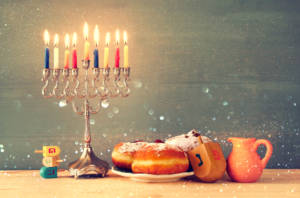
What is Hanukkah, and how did it develop into the celebration we know today? Uncovering its roots reveals a fascinating narrative from ancient times.
Many cultures and religions have a “festival of lights.” Hindus all over the world light lamps, asking Lakshmi for wealth and wisdom during their fall Diwali celebrations. Every Chinese year ends with a Lantern Festival, heralding the coming spring and new year. The Jewish holiday Hanukkah is also called a festival of lights, but there’s much more to it than that. What is Hanukkah, and how did it develop into the celebration we know today? Discovering its roots reveals a fascinating narrative from ancient times.
The Maccabean Revolt
ReformJudaism.org discusses the events behind the Hanukkah story. Antiochus IV Epiphanes was a Greek Seleucid king during the middle of the 2nd century BCE. The Seleucid Empire stretched from western India to modern-day Israel. The Encyclopedia Britannica explains that Antiochus wanted to strengthen Hellenistic cultural influences throughout the region. To solidify power, he appointed Menelaus as Jerusalem’s high priest. The former high priest, Jason, led a revolt against Menelaus and his supporters.
In retaliation, Antiochus invaded Jerusalem and enforced Hellenism. Jewish religious practices were officially forbidden and punishable by death. Antiochus erected an altar to Zeus in the Temple and ordered sacrifices performed in front of an idol in his likeness. These events spurred Judah Maccabeus, a member of a prominent priestly family, to lead a revolt and reclaim the Temple.
Yet Haaretz shares an alternative explanation for the Maccabean revolt. Historians suggest that it was a civil war in Judea, pitting Hellenist Jewish people against traditionalists. Antiochus sent multiple armies to put down the rebellion but was foiled each time. With an attack by King Mithridates I of Parthia in 167 BCE., Antiochus was forced to defend his empire. This allowed the Maccabean rebels to retake Jerusalem and the Temple in 164 BCE.
A Miracle in Jerusalem’s Temple
Curiously, the event that’s central to the Hanukkah holiday doesn’t even appear in I or II Maccabees. The Talmud tells the tale, mentioning that Judah Maccabees’ forces found only one jar of oil left when they reclaimed the Temple. That jar should have only lasted one day, but the Temple’s eternal light burned for eight days while a messenger traveled in search of more oil. These eight days of light are encapsulated in Hanukah’s eight days along with its menorah, a nine-branched candelabra that holds the candles that are lit throughout the celebration.
A Festival of Lights
Hanukkah’s date shifts every year because the Hebrew calendar uses lunar months. The holiday always begins on the 25th day of Kislev, which can fall between early November and late December. Every night during this holiday, one candle is added to the menorah and lit by a servant candle called a shamash. The first candle is placed on the right side, and successive candles are added, moving from right to left. Chabad explains that these lights burn after sunset to bring light into the darkness. Blessings are said while the candles are ignited and to commemorate the Hanukkah miracle.
The lights symbolize the Temple miracle, but fried foods also recall the long-lasting supply of lamp oil. My Jewish Learning mentions that Ashkenazi Jewish people typically fry and serve potato cakes called latkes, while Sephardic Jewish people fry and serve doughnuts. Other central Hanukkah traditions include giving gifts and playing with dreidels, spinning tops emblazoned with four Hebrew letters: nun, gimmel, hay, and shin. The dreidel’s four letters stand for the phrase “Nes gadol hayah sham,” which translates to “a great miracle happened there.”
A Holiday of Hope
Like many modern holidays, Hanukkah is a commemoration. Its story focuses on resistance against authoritarianism and religious oppression. The history behind the Maccabean revolt may not yet be clear, but Hanukkah remains symbolic of survival, persistence, and hope.
Dreidel, Dreidel, Dreidel: The History and Legends Behind a Hanukkah Pastime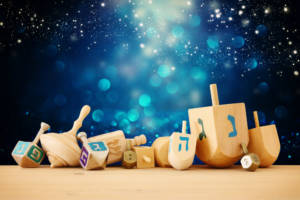
The dreidel comes in many different forms and sizes. Alongside the menorah, this spinning top game is one of the most recognizable Hanukkah traditions.
Spinning the dreidel is a popular game during Hanukkah. Alongside the menorah, this spinning top game is one of the most recognizable Hanukkah traditions. It’s such an integral and memorable custom that some who play with dreidels as kids go on to collect them as adults. Where did this little top come from, and how did it become part of Hanukkah celebrations? The answers to these questions may surprise you.
What Is a Dreidel?
Dreidels come in many different forms and sizes. Chabad explains that most are square or rectangular with four sides and a pointed base. They’re usually made of plastic or wood, but collectible versions can be crafted from silver, bronze, ceramics, glass, crystal, brass, or pewter.
Every dreidel is decorated with four Hebrew letters. However, there are slight differences between those used in Israel and those on dreidels made in other parts of the world. The iCenter for Israel Education clarifies that Israeli dreidels bear the letters nun, gimmel, hay, and pey. These letters stand for “nes gadol hayah po,” which means “a great miracle happened here.” Dreidels outside of Israel are decorated with different letters: nun, gimmel, hay, and shin. These letters stand for “nes gadol hayah sham,” translating as “a great miracle happened there.”
Legends of the Dreidel’s Origins
Chabad retells one common tale that explains the dreidel’s invention. During the middle of the 2nd century B.C.E., Judea was part of the Seleucid Empire ruled by Antiochus IV Epiphanes. Shortly before the Maccabean revolt, the king had outlawed all Jewish religious practices. Learning the Torah had become a crime punishable by death, Jewish children continued to study it while hiding in caves. When Greek patrols approached, the children would put away their Torah scrolls and play with their spinning tops instead.
Rabbi David Golinkin discusses other explanations for the dreidel’s origins. These include detailed numerological backstories for the four Hebrew letters on the dreidel. Others involved wordplay, and a few insist that they stand for the four classic empires that oppressed the Jewish people: Babylon, Persia, Greece, and Rome.
Did the Dreidel Come From Ireland?
During the early 1500s, English and Irish children played a spinning top gambling game called “totum.” By the 1700s, it was a Christmas pastime called “teetotum.” The Irish version used a four-sided top with four words: “take all,” “half,” “put down,” and “nothing.” Each player would follow the directions based on how the top landed. Winners took all or half of the pot. “Put down” directed the player to add to the pot. “Nothing” required no action.
Rabbi Golinkin adds that this game made its way to Germany, where the top was decorated with the letters n, g, h, and s. Jewish children eventually learned the game, and Hebrew characters replaced the Roman letters on the top.
Two Names, One Object
Where did the word “dreidel” originate? Merriam-Webster Dictionary explains that it comes from the Yiddish word “dreydl,” derived from the Yiddish verb “dreyen,” which means “to turn.” Yiddish is a fusion of High German and Hebrew, and “dreyen” comes from an older German verb “drǣjen.”
Some people call this top a “sevivon,” a modern Hebrew word taken from the verb “saváv,” meaning “to turn.” The term may have been coined in 1887 by Itamar Ben-Avi, the son of lexicographer Eliezer Ben Yehuda and the first native speaker of modern Hebrew. Israel 21c’s Rachel Neiman mentions that its first printed appearance dates to 1897, with journalist David Isaiah Silberbusch claiming credit for its invention.
More Than Just a Game
Humans have played with spinning tops for thousands of years. In some cultures, these ordinary objects take on deeper meanings. Regardless of the dreidel’s origin, it speaks to joyful celebrations and the strength of the human spirit.
Jewish Perspectives on Mental Health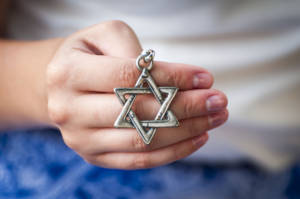
Religions haven’t always handled mental illness with compassion and kindness, but how do modern Jewish Canadians deal with such challenges?
The Canadian Mental Health Association states that one in five Canadians is impacted by mental illness each year. With Canada’s estimated 392,000 Jewish people comprising about 1% of the population, many Jewish individuals will also face mental health challenges. Religions haven’t always handled mental illness with compassion and kindness, but how do modern Jewish Canadians deal with such challenges? Answering this question requires an overall look at mental health in Canada and Jewish perspectives on the issue from both the past and present.
Mental Health Issues in Canada
Mental health in Canada is a complex picture. The Canadian Mental Health Association (CMHA) estimates around 8% of adults will suffer from major depression and 5% with suffer from anxiety disorders. Even direr is the CMHA’s revelation that at least 50% of Canadians will have experienced mental illness by age 40, but nearly half of individuals dealing with anxiety or depression never seek professional help. While these figures are disturbing, they’re due to many factors, including lack of access to care, stigmas surrounding mental illness, and fear of discrimination.
Historical Jewish Perspectives
My Jewish Learning explains that classical Jewish texts encompass a wide range of viewpoints on mental illness. The Tanakh contains several Hebrew words that are often translated as “madness.” One key word from Deuteronomy is “shigaon,” an antecedent for the modern Yiddish term “meshuggeneh” that means “crazy.” This state of mind is framed as divine punishment for failing to heed God’s word. The Talmud discusses concepts such as mental competency in legal contexts, and the word “shoteh” denotes someone who is severely detached from reality.
On the other hand, it’s been suggested figures such as King David, Job, Hannah, and Elijah may have struggled with depression. These individuals are usually depicted in a more compassionate light. Chabad mentions the term “machalat hanefesh,” which refers to mental illness and is translated as “illness of the soul.” While it may not accurately reflect the involvement of the brain and body, this phrase can describe the depths of suffering that people experience.
Fighting Stigmas, Finding Answers
Nearly every religious or cultural community contains negative beliefs about mental illness. Some examples in contemporary English words include “crazy,” “idiot,” or “nutcase.” Dr. Neal A. Lester at Tolerance.org breaks down how these are damaging and ableist, describing the ways in which they can potentially dehumanize people with mental health struggles.
While similar stigmas exist within Jewish communities, there also seems to be a greater overall openness towards mental health challenges and solutions. My Jewish Learning discusses a few studies revealing that Jewish people tended to exhibit more positive attitudes towards counseling, psychotherapy, and other forms of professional mental health assistance. The Religious Action Center of Reform Judaism published the Reform Movement’s position on mental health, which calls for several objectives in government, synagogues, religious schools, youth programs, and communities to help those with mental health challenges:
- Destigmatizing mental illness
- Training and education
- Greater community support
- Better access to housing and care
- Ensuring fair treatment, safety, and legal rights of mentally ill prisoners
- Ending workplace discrimination
- Increased focus on prevention and treatment
Changes are occurring within Orthodox Jewish communities as well. One key objective is removing harmful stigmas, which can lead to isolation and secrecy. Advocacy groups are taking the lead, such as Relief, which researches providers and offers referrals, and Chazkeinu, offering peer-led support for Jewish women.
Chemlah: Compassion and Mercy
While stigmas surrounding mental illness still remain, many Canadian Jewish communities strive to eliminate them and help those impacted receive the assistance they need. “Chemlah” is a Hebrew word that can reflect compassion in a divine sense, especially towards those who are vulnerable. Such compassion is essential to bring about understanding, support, and healing.
Anti-Semitism: A Centuries-Old Problem Resurfaces in Canada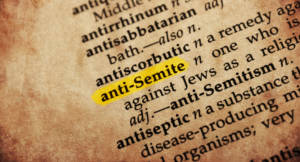
Amid warnings about fascist philosophies becoming a global trend, concerns exist about the growing threat of Anti-Semitism taking root.
Read any current news headlines and you’ll encounter one troubling trend: hateful actions motivated by race, religion, ethnicity, immigrant status, gender, or sexuality. Some hit close to home, such as the January 2017 attack on a Quebec City mosque. Amid warnings about fascist philosophies becoming a global trend, concerns exist about the targeting of religious minorities. In Canada, some warn about a marked increase in anti-Semitism.
A Brief History of Anti-Semitism
While the term “anti-Semitism” dates to 1879, the Encyclopedia Britannica discloses that its ideological roots are much older. Before the advent of Christianity, imperial rulers often expressed ire at Jewish communities’ refusals to assimilate and adopt the dominant culture’s religious beliefs. Later, Christians around the Middle East and the Mediterranean distanced themselves from their Jewish neighbors. Once Christianity became the official religion of the Roman Empire, Jewish people were further marginalized as anti-Semitic thought found its way into public opinion and theological teachings.
During medieval times and in modern Europe, Jewish communities grew, thanks in part to success in trade and banking. At the same time, members of these communities made significant contributions to a wide range of scientific, philosophical, and artistic disciplines. Yet during less tolerant regimes, Jewish people became targets of ugly stereotypes. Hateful rhetoric included passion plays that reenacted Jesus’s persecution and cast Jewish people as villains as well as blood libel accusations that they murdered and sacrificed Christian children. Anti-Semitic ideas picked up more steam prior to World War I, leading to horrific action by Nazis through the Holocaust.
Canada and Anti-Jewish Prejudice
As many Jewish refugees fled for their lives during the 1930s, Canada’s response was less than welcoming. An archived CBC News clip from 1982 discussed the closed-door policies of former Prime Minister Mackenzie King. Out of an estimated 800,000 total who attempted to flee Europe, Canadian authorities only allowed 5,000 to enter. Especially egregious was the Canadian government’s refusal to allow the landing of the MS St. Louis, a ship that left Europe in May 1939 carrying 900 Jewish refugees. A November 2018 Reuters piece detailed Prime Minister Justin Trudeau’s apology for this incident.
Worrying Trends in the 21st Century
While anti-Semitic harassment, vandalism, and hate crimes have increased in the United States, they’ve also been on the rise in Canada. A November 2018 Haaretz article cited Statistics Canada’s findings, revealing 360 anti-Jewish incidents reported to police departments across the nation. An April 2018 CTV News piece referred to B’nai Brith Canada’s report, which included several instances of anti-Jewish graffiti in Toronto, hateful messages targeting a family in Winnipeg, and several synagogues across the country receiving threatening photos.
Experts are trying to determine the causes behind the apparent increase in anti-Jewish hatred. Some point to our southern neighbors as the problem, citing examples such as the October 2018 Pittsburgh synagogue shooting and the Charlottesville “Unite the Right” rally in August 2017. Yet an April 2018 Globe and Mail article divulges a disturbing trend all over the West, with anti-Semitic ideologies gaining more noticeable and brazen expression throughout Europe and North America. Journalist John Ibbitson tries to unpack the problem, suggesting a few factors that may contribute to the rebranding of anti-Jewish conspiracy myths:
- A disdain for globalization
- Conflating criticisms of Zionism with anti-Jewish sentiments
- The rise of nativism and populism
Fighting Hatred on Canadian Soil
In December 2018, B’nai Brith Canada released an action plan focusing on additional training for law enforcement, improved legislation, and measures for handling hate speech both online and at public universities. Others call upon the Canadian government to go beyond apologies with honest assessments of Canadian history, more education, and combating Holocaust denial and similar ideologies. In the meantime, Jewish Canadians seek answers and watch for the safety of their friends, families, and communities.







